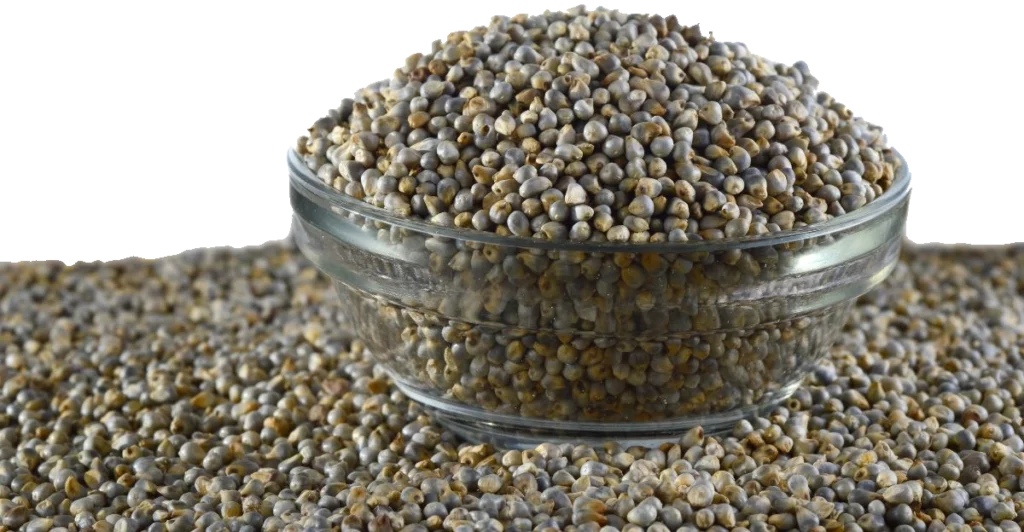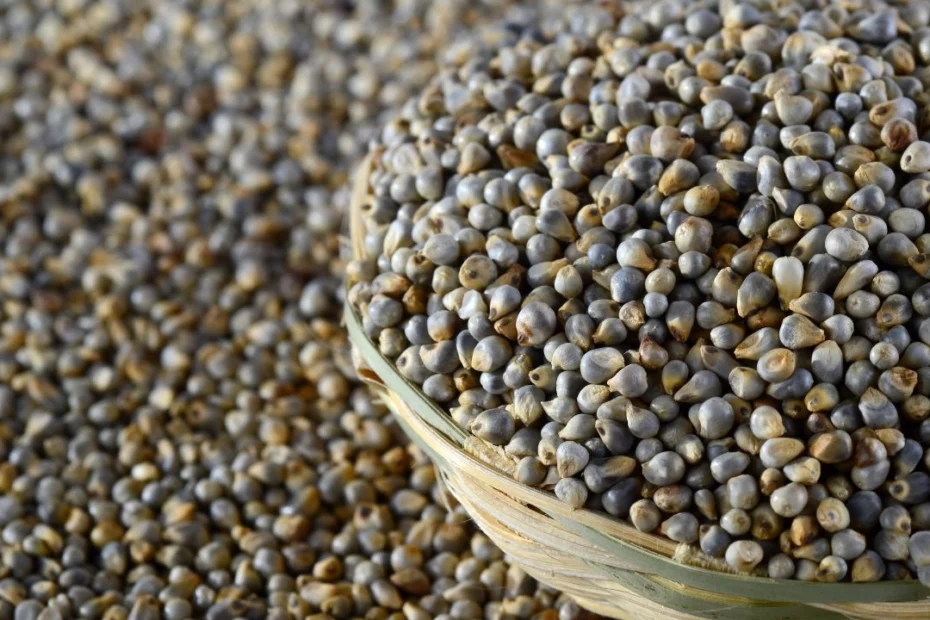The ancient grain bajra, also known as pearl millet, has become more well-known in recent years due to its exceptional nutritional profile. Since bajra has been consumed for so many years, it is now widely grown and consumed all over the world. We shall examine the numerous nutritional qualities and health advantages of bajra in this blog, making it a veritable nutritional powerhouse. Bajra, sometimes referred to as pearl millet, is very nutrient-dense and has a number of health advantages. This ancient grain is a wonderful supplement to a balanced diet because it is loaded with important nutrients.
Bajra is an excellent source of nutritional fiber. In order to support good digestion, avoid constipation, and maintain regular bowel movements, fiber is essential. Additionally, it assists weight management, encourages satiety, and aids in blood sugar regulation. Bajra also contains a lot of complex carbs, which give off energy gradually. This makes it a great option for folks who lead active lifestyles or who desire sustained energy throughout the day.
Benefits of Bajra:
Rich in Fiber: One of the main advantages of bajra is how much fiber it contains. Maintaining gut health, encouraging regular bowel movements, and avoiding constipation all depend heavily on fiber. Bajra contains a significant quantity of dietary fiber per serving, promoting healthy digestion and gut function.
Gluten Free: Bajra is a great grain option for people who are sensitive to gluten or have celiac disease. Given that it is inherently gluten-free, it offers a secure substitute for individuals who must avoid gluten in their diet.
Nutrient Abundant: Bajra is abundant in nutrients that are necessary for maintaining overall health. It is a top source of niacin, thiamin, and riboflavin, three B-complex vitamins. These vitamins are crucial for brain health, energy production, and other processes.
Rich in Protein: As a superior plant-based source of protein, bajra is a great choice for vegetarians and vegans. Building and mending tissues, promoting muscle growth, and keeping a strong immune system all depend on protein. By using bajra in your diet, you can satisfy your protein needs without entirely relying on sources of animal-based protein.
Rich in Minerals: Bajra is a great source of minerals like magnesium, iron, phosphorus, and potassium. Numerous metabolic processes in the body, including those that provide energy and preserve bone health, include magnesium. For the blood to carry oxygen, iron is necessary, while phosphorus and potassium are needed for strong bones and normal nerve and muscle function.
High in Antioxidant: Bajra has antioxidant properties that aid in defending the body against free radicals, which can harm cells and exacerbate chronic illnesses. By scavenging free radicals and lowering oxidative stress, phenolic compounds, one of the antioxidants found in bajra, assist.
Facilitates Weight Management
Aids Weight Management: Bajra can help with weight management attempts due to its high fiber content. Foods high in fiber aid with satiety, which keeps you feeling fuller for longer and lessens the propensity to overeat. Bajra can help you achieve your weight loss or maintenance objectives.
Diabetes Management: Compared to foods with a high glycemic index, bajra raises blood sugar levels gradually and steadily. Because of this quality, Bajra is a good grain option for persons who have diabetes or are looking to manage blood sugar levels.

How to Include Bajra in Your Diet:
Bajra can be used in a variety of foods and cuisines. It can be used as a thickening factor in soups and stews or milled into flour to create bread and rotis (flatbreads). Bajra can also be used to make upma, porridge, or salads to improve their nutritious value.
Bajra is a whole grain, therefore it’s vital to keep in mind that certain people may find it more difficult to digest. Bajra can be improved in terms of digestibility and nutritional availability by soaking, fermenting, or sprouting.
How To Cook Bajra?
Bajra is a flexible ingredient that works in many meals in place of grains like rice, quinoa, oats, and others. Prior to cooking, bajra may be soaked for hours to enhance nutrient absorption.
Simply boil 2 cups of water or milk with 1 cup of millet. After that, lower the heat to a simmer and give it 15 minutes to cook. This process ought to result in a fluffy, light grain. You can add up to an additional cup of water or dairy to your bajra if you prefer it to be more porridge-like. To bring out a deep, nutty flavor in the grain, you can also roast the dry millet for a short period of time before adding the liquid.
Bajra is commonly ground into a fine flour that can be used to make roti and other types of flatbread. Yet, bajra flour is not limited to flatbreads alone. It can also be used to make cakes or as a replacement for other types of flour in many recipes.
Conclusion:
To get the most nutritional value out of your Bajra flour or grains, make sure you get organic versions. Additionally, if you’ve never eaten Bajra before, start by introducing it gradually to your meals to give your body time to get used to this nutrient-dense grain.
Overall, bajra is a flexible, nutrient-rich grain with a host of health advantages. Bajra, which can be used in savory recipes, baked products, and even desserts, can be a beneficial addition to your vegan diet because it offers a variety of crucial nutrients and fosters general wellbeing.

